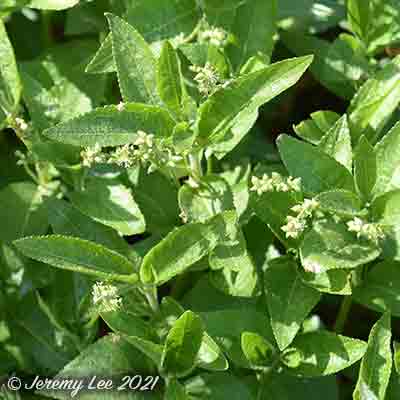
 |
|
Scientific Classifications explained » Amphibians » Ants » Aphids » Bees » Beetles » Birds » Bugs » Butterflies » Caterpillars » Damselflies » Dragonflies » Earwigs » Flies » Frog/Leafhoppers » Fungi » Galls » Grasshoppers » Harvestmen » Hoverflies » Lacewings » Ladybirds » Leaf Mines » Lichens » Mammals » Millipedes » Mosses » Moths » Sawflies » Slugs » Snails » Spiders » Trees » Wasps » Wild Flowers » Woodlice |
UK Nature > Wild Flowers > Green Wild Flowers > Mercurialis perennis

Scientific Name: Mercurialis perennis Common Name: Dog's Mercury Mercurialis perennis, more commonly known as Dog's Mercury, is a perennial, medium-height woodland plant. The leaves are large and long pointed oval-shape with toothed edges. They are bright green, hairy and crowded towards the top of the stem. The flowers are small and green and appear in the spring. It is not a showy plant and is easily overlooked, but it’s very common. It flourishes in woodland with a preference for living under oak, beech, ash and elm. Although it’s mainly a plant of ancient woods, it can colonise new deciduous woodland very quickly. It favours shady areas and can also be found in hedgerows. Some species of ground-nesting bird, such as woodcock, seem drawn to areas colonised with dog’s mercury. Speckled bush cricket nymphs feed on its leaves, along with other species including beetles, weevils, springtails and molluscs. The name dog’s mercury has nothing to do with the pet – the plant is toxic to many animals, including dogs. It actually refers to it looking similar to, but ‘lesser than’ plants in the mercury family. |
|

https://www.uknature.co.uk is a website dedicated to showing the immense diversity of UK nature and wildlife. Our vast range of habitats, from lowland arable to snow covered mountains, from storm-ravaged coastlines to peaceful inland freshwater lakes and rivers, from dry, sandy heaths to deciduous and coniferous forests, all these habitats contribute to the abundance of UK nature. We have wild birds in huge numbers either residing or visiting our shores (597 recorded species as at July 2013) and we must also not forget the humble back garden with its grass lawns, flower beds filled with nectar rich flowers, shrubs and trees, all designed to attract huge numbers of insects such as bees, moths, butterflies and hoverflies; and finally the small ponds which provide safe havens for frogs, toads, newts and even slow worms and grass snakes. www.uknature.co.uk is the showcase for my personal passion, photographing uknature in all its glory. I sincerely hope you all enjoy the fruits of my labours. This site and all images contained therein is © Jeremy Lee 2004 - 2021. All Rights Reserved. Site design by Jeremy Lee. Site development & IT Support by Stuart Lee. |